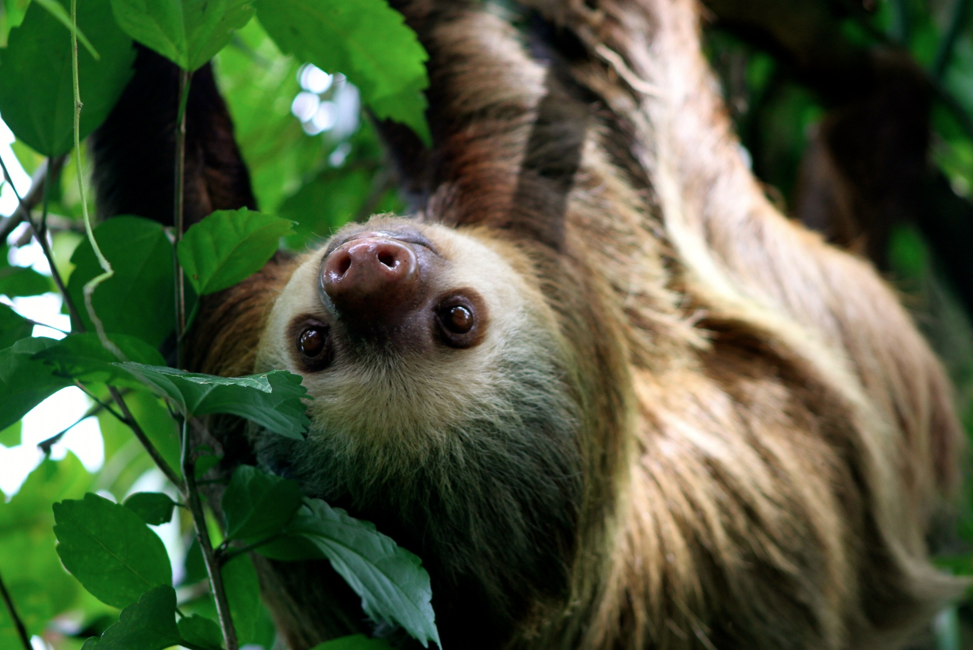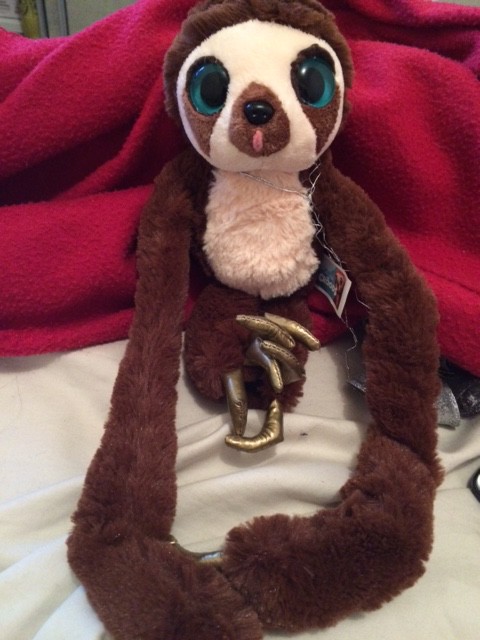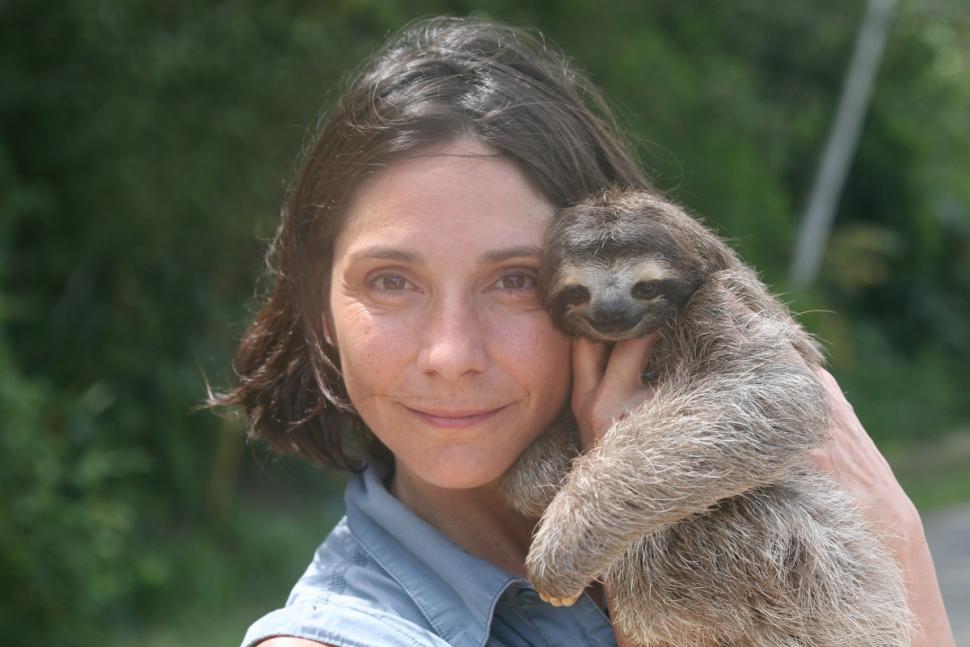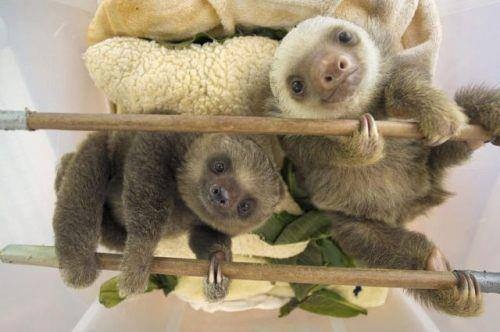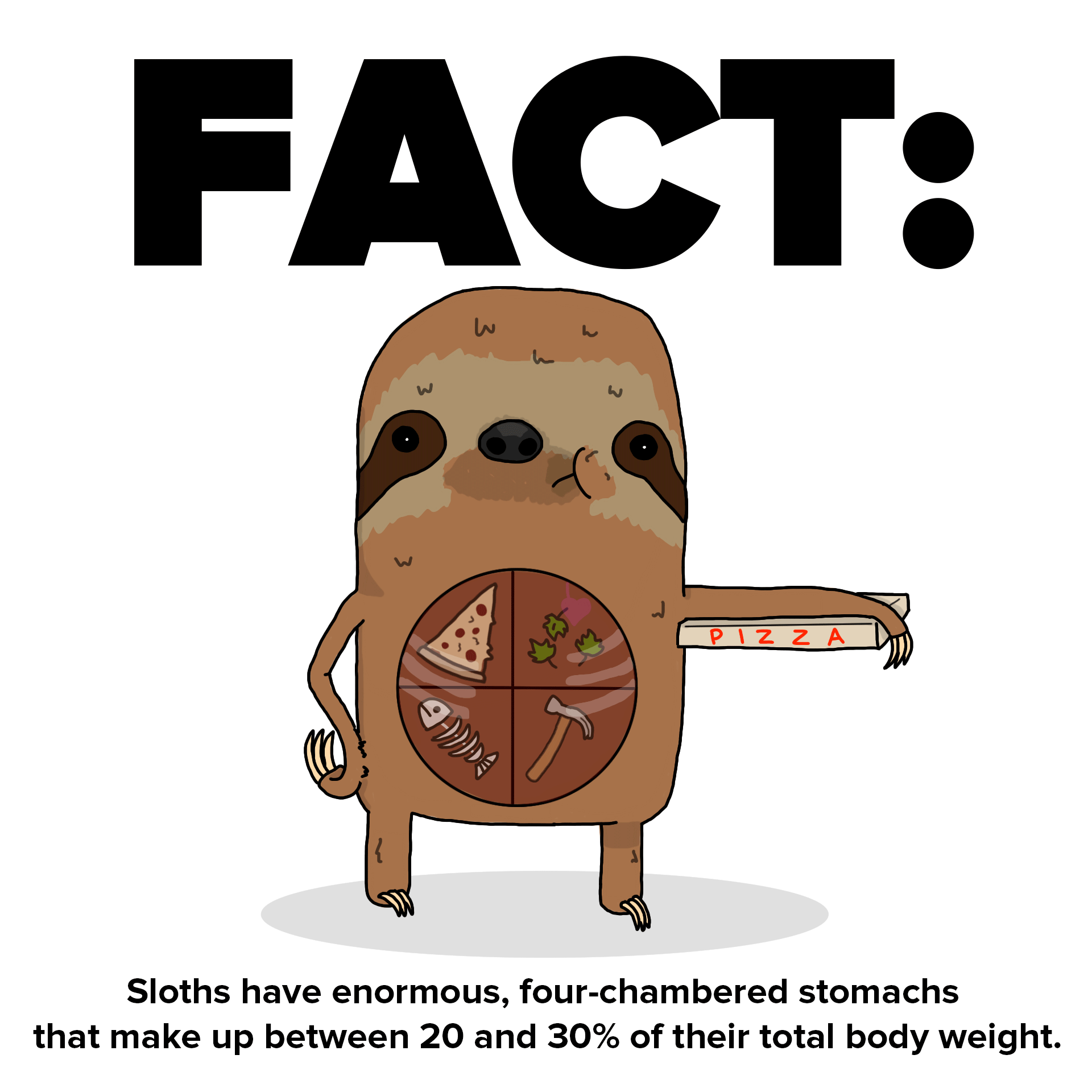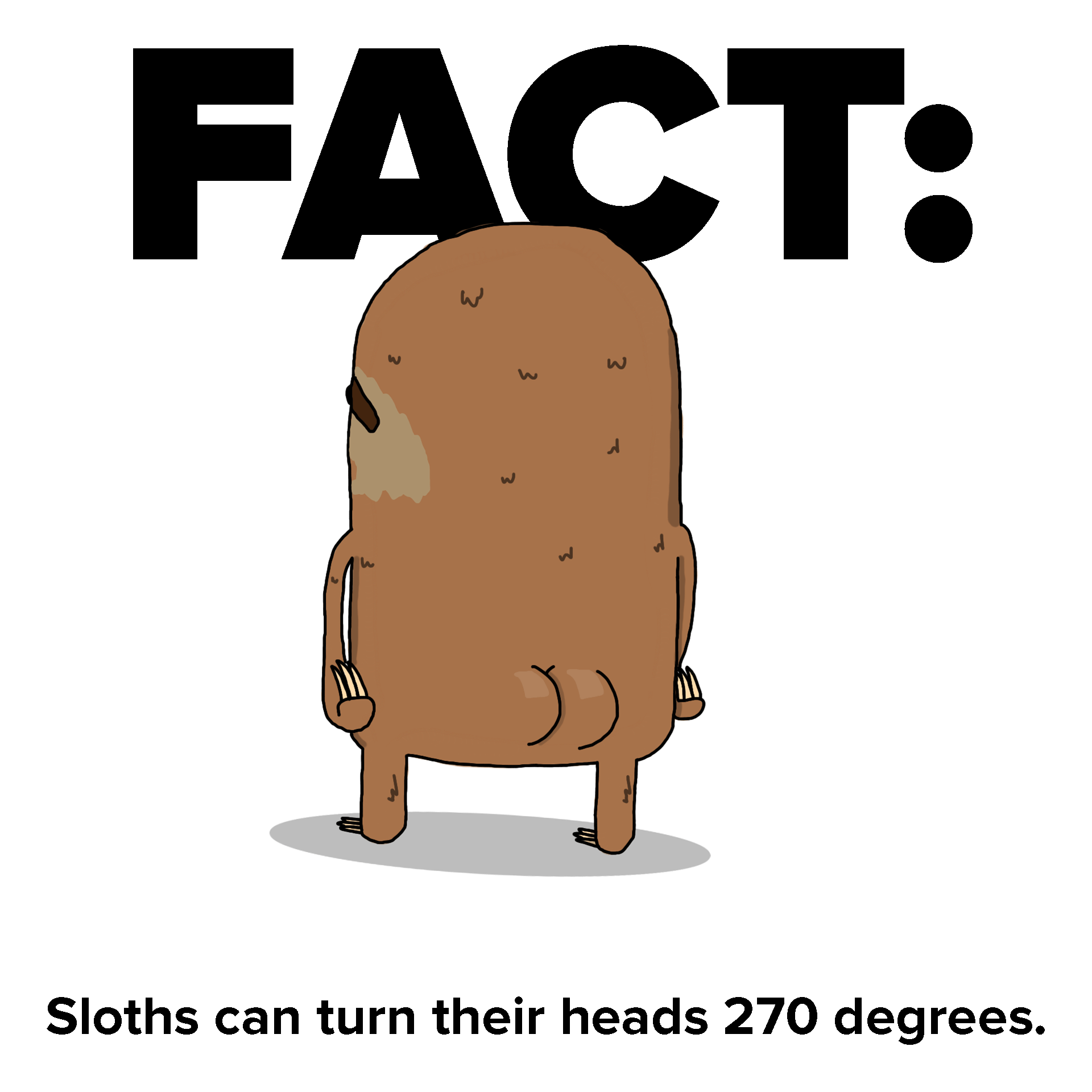This is a great educational clip and really interesting! Just watch the first half for the sloths.
Tag Archives: Did you Know
How do sloths see the world?
Ever wondered what those gorgeous dark eyes are seeing when a sloth looks out onto the world? Humans are generally trichromats; our retinas possess three types of photoreceptors for recognising colour (“cone” cells), each of which has a different absorption spectra.
Xenarthrans (sloths, armadillos and anteaters) however, are rod monochromats. This condition in humans results in colourblindness, low vision in dim light, and almost complete blindness in bright light.
A new study, published in The Royal Society Proceedings journal, used many different genetic methods to conclusively show that the Hoffmann’s two-toed sloth is a monochromat. Furthermore, they concluded that these sloths have a long history of monochromacy. Based on fossil records, this may be a result of a historically subterranean lifestyle (ground-dwelling), that preceded the arboreal lifestyle (tree-dwelling) they live today, and hence restricted their evolution due to the dim light conditions.
“We searched the genome of…Choloepus hoffmanni (Hoffmann’s two-toed sloth)…for retinal photoreceptor genes and examined them for inactivating mutations. We hypothesize that rod monochromacy…evolved as an adaptation to a subterranean habitat in the early history of Xenarthra. The presence of rod monochromacy has major implications for understanding xenarthran behavioural ecology and evolution.”
So when you look into a sloth’s eyes, what do they see when they look back at you? If it’s day time, probably a light grey, blurry figure. But let’s just pretend otherwise, shall we?
Xena the Sloth
Xena is a little bit unpredictable. She can be quiet one minute and full of beans the next! But you can’t help but love her.  If you like the look of this little sloth, grab it from Amazon.
If you like the look of this little sloth, grab it from Amazon.
The name Xena comes from the word “Xenarthra“, the superorder of placental mammals which includes tree sloths as well as their cousins armadillos and anteaters. It means “strange joints”, as the vertebral joints of these animals have extra articulations and are unlike any other mammal (xenarthry).
I know, I know. This sloth is actually called Belt from The Croods. But, well, I like to personalise my sloths with their own unique natures.
New baby sloth at Topeka Zoo, Kansas
On November 20 there was a new arrival at Topeka Zoo in Kansas, USA. A little baby for sloths Jackie and Mocha! See more pics here.
Did you know:
A Hoffmann Sloth like this one (Choloepus hoffmanni) has a gestational period of 11.5 months. This is relatively long compared to other sloth species: the pale-throated three-toed sloth (Bradypus tridactylus) has a gestational period of 4.5 months and the pygmy three-toed sloth (Bradypus pygmaeus) is 6 months. On average, all sloth species give birth to one baby every year.
A Sloth Named Velcro
Recently, American channel PBS screened a documentary titled “A Sloth Named Velcro” on Nature. Here’s a link to the video if you’re lucky to be in the US… it isn’t available in Oz unfortunately. I managed to get a hold of a copy though and it is fantastic! Very educational, informative, adorable, interesting and of course full of wonderful sloths of all kinds. Even taught me a thing or two.
On a similar note, someone at work found out about my sloth obsession not that long ago. They didn’t even know what a sloth was. Bless. Then today it got brought up by someone else and said coworker says “So, okay, tell me about sloths”. Well. Where do I begin…
The Tao of Sloths
The Tao of Sloth
What would it be like to be a sloth? Human life would be a blur. Sloths seem to embody a central tenet of Taoism “action through non-action” so let’s consider a “Tao of Sloth”:
- Eat slowly – The sloth’s diet of leaves is hard to digest, their approach is to allow plenty of time
- Hang out – Sloths save energy by hanging from their claws rather than using their muscles
- Smile all the time – Sloths are cute and appear to smile though they’re not primates, they’re related to anteaters and armadillos
- Be kind and others will be kind to you – Three-toed sloths climb down from the safety of the tree canopy to poo on the ground, for the benefit of moths that live in their fur (the moths in turn encourage the growth of beneficial algae)
Post Credit: BBC News
Did You Know?
A sloth can turn its head almost 180 degrees, as it has an extremely flexible neck.
From the Nature Institute in New York:
The sloth’s neck is not only unique in its flexibility, but also in its anatomy. Mammals have seven neck (cervical) vertebrae. The three-toed sloth usually has nine and the two-toed sloth has between six and nine cervical vertebrae.
Slothy gif Facts
From the Montreal Biodome: baby sloth ultrasound
From CBC News Montreal:
“A six-year-old sloth, who became a favourite at Montreal’s Biodome during her rehabilitation from a broken leg suffered as a youngster, is now an expectant mother. The sloth underwent an ultrasound this week, a video of which was released on YouTube. …Few two-toed sloths births have been documented, according to the Biodome, but the gestation period is around 11 months.”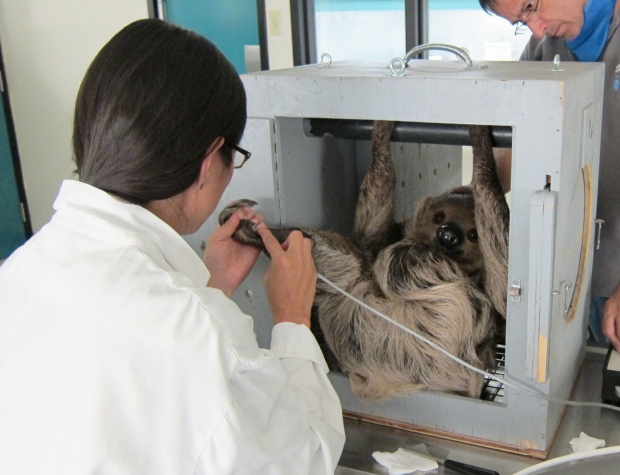
Why do Sloths Hang Upside-Down?
Our Sloth Backpack Project reveals that sloths spend about 90% of their day inverted; the internal adhesions make that possible by reducing sloths’ energy expenditure. Because of their extremely slow metabolic rate and exceptionally low body temperature, it can take up to 30 days to digest a single leaf. Having a constantly full stomach means they can’t ingest much on a daily basis, so their caloric intake is very low. Sloths have virtually no flexibility in their energy budget: they generate just enough energy from their diet to move when and where required; beyond that, not much more is stored.
Why do sloths hang upside down for so long? Because they need to eat tender new leaves that grow on the outer tips of branches. These leaves often have a lower toxin content and are easier to digest. In order to reach these choice leaves, a sloth has to hang by its toes.
